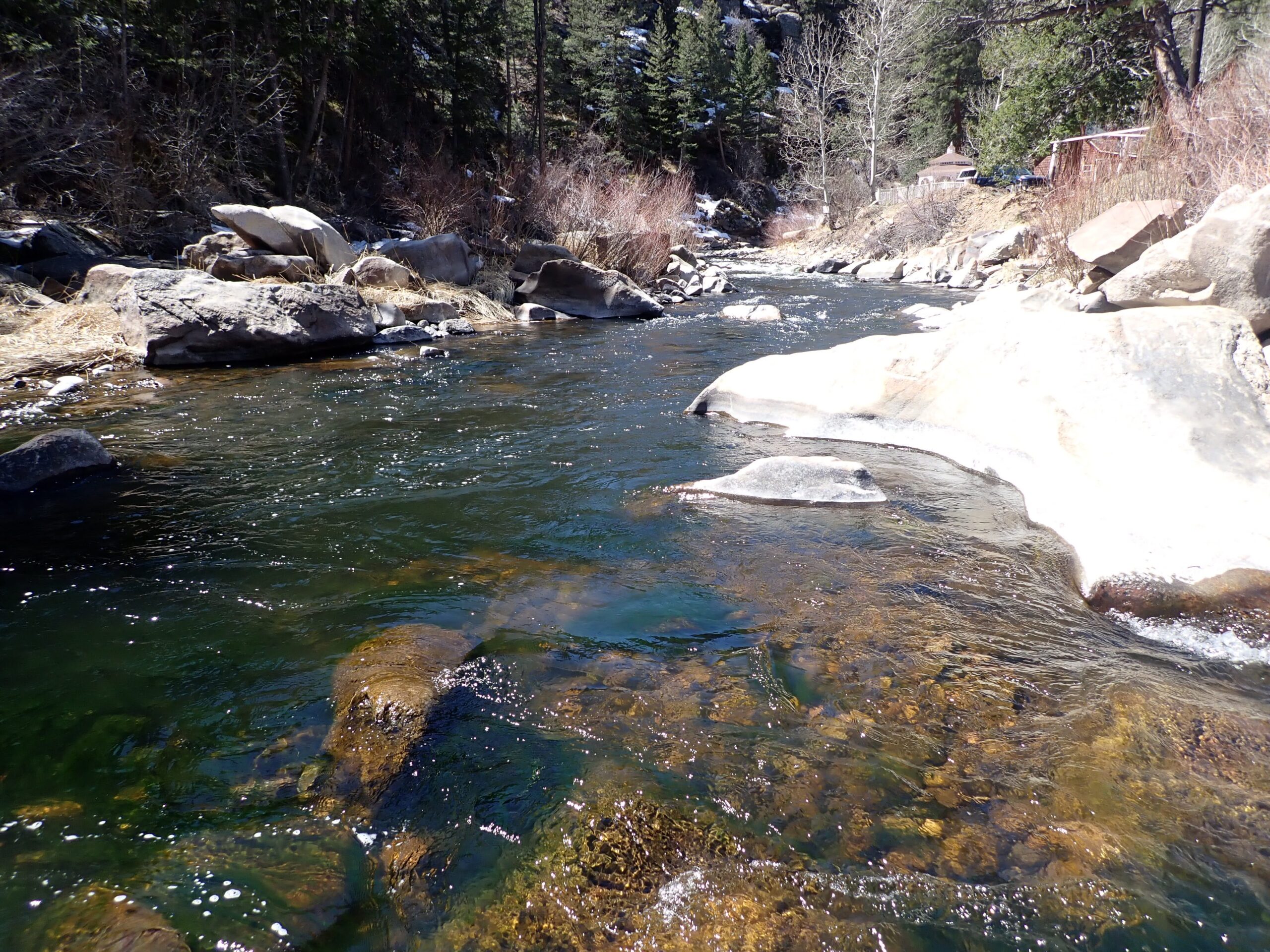Time: 11:30AM – 3:30PM
Location: In the canyon below Estes Park
Big Thompson River 10/25/2024 Photo Album
I somehow strained my knee playing pickleball last Friday, and I then aggravated it on Monday, so I decided to steer clear of that fun activity for a while to hopefully encourage healing of my aging body. I discovered, however, that hiking in a straight ahead direction did not create discomfort during my hike into South Boulder Creek, and then I tested it again on a 4.8 mile hike in Rocky Mountain National Park. Since I was refraining from pickleball, and the weather forecast for Friday was reasonably favorable, I decided to undertake another day of fly fishing.
Originally I planned to make the journey to Eleven Mile Canyon, but in the final analysis, I was averse to making the long drive. South Boulder Creek on Tuesday was enjoyable, but again I was reluctant to endure the one mile hike up a steep hill at the end of the day. On October 15 I visited the Big Thompson River and experienced reasonable success, and the flows remained at 23 CFS, and the projected high temperature in Estes Park was 61 degrees. The Big Thompson became my destination.
I arrived at a wide pullout in the catch and release section by 11:00AM, and the dashboard thermometer registered 48 degrees. I countered the unaccustomed chill by wearing my Under Armour long-sleeved thermal undershirt and my light down coat. For headgear I chose my billed hat with earflaps, and I tugged the flaps down for the start of my day of fly fishing. I chose my Loomis two piece five weight as my casting tool, and I was perched along the edge of the stream by 11:30AM.
I read many articles extolling hot streamer fishing in the fall, so I decided to commit to that fly fishing methodology. I crimped a split shot to my line eighteen inches above the terminal offering, which was a size eight black ghost to start my day. I persisted with streamers from 11:30AM until 12:15PM, when I paused for lunch. I cycled through the black ghost, a Mickey Finn, and a cheech leech; but I observed nary a follow. I executed upstream, up and across, across and down, and swings and dangles at the end of the drifts, but nothing proved effective. I also varied the speed of the retrieve and experimented with twitches and pauses. Nothing.
After lunch I abandoned the streamer concept, and tested a double dry approach. I knotted a peacock hippie stomper to my line and then added a size 14 stimulator with a rust body. I also read many articles about the October caddis, and the stimulator was my attempt to imitate that popular autumn food morsel. Nothing.
During this entire time I was fishing in the shadows, and I was very thankful for my layers and earflaps. The chill would have been much more acceptable, had I been able to land a fish. I did manage to temporarily hook a trout on the hippie stomper during this time period, but it escaped after an acrobatic leap above the surface. No luck with streamers and minimal action with double dries suggested another change, and I went to a dry/dropper. The hippie stomper remained in place, and I added a beadhead hares ear nymph and salvation nymph on a relatively long dropper.
This gambit was also a failure. I temporarily hooked a minnow sized brown trout on one of the nymphs, but otherwise the subsurface offerings were essentially a nuisance. At one point the nymphs drifted beneath a large exposed boulder with a ledge, and I was unable to dislodge them, so I waded next the rock. I tried to use my boot and my wading stick to free the nymphs, but eventually I defaulted to reaching my left arm down to unsnag the flies. I should have broken them off, because I now had saturated layers up to my elbow, and this condition simply added to my discomfort while fly fishing in the shadows. The only positive was the near absence of wind.
I looked upstream, and I noticed that the Big T made a 90 degree bend, and the area beyond the bend seemed to be bathed in sunshine. I skipped the remaining shaded stretch and advanced to sunlight. The nymphs were not producing, so I returned to the double dry method. In this case I stayed with the hippie stomper, but I swapped the stimulator for a size 14 light gray deer hair caddis. The stomper/caddis combo has historically proven to be a winner.
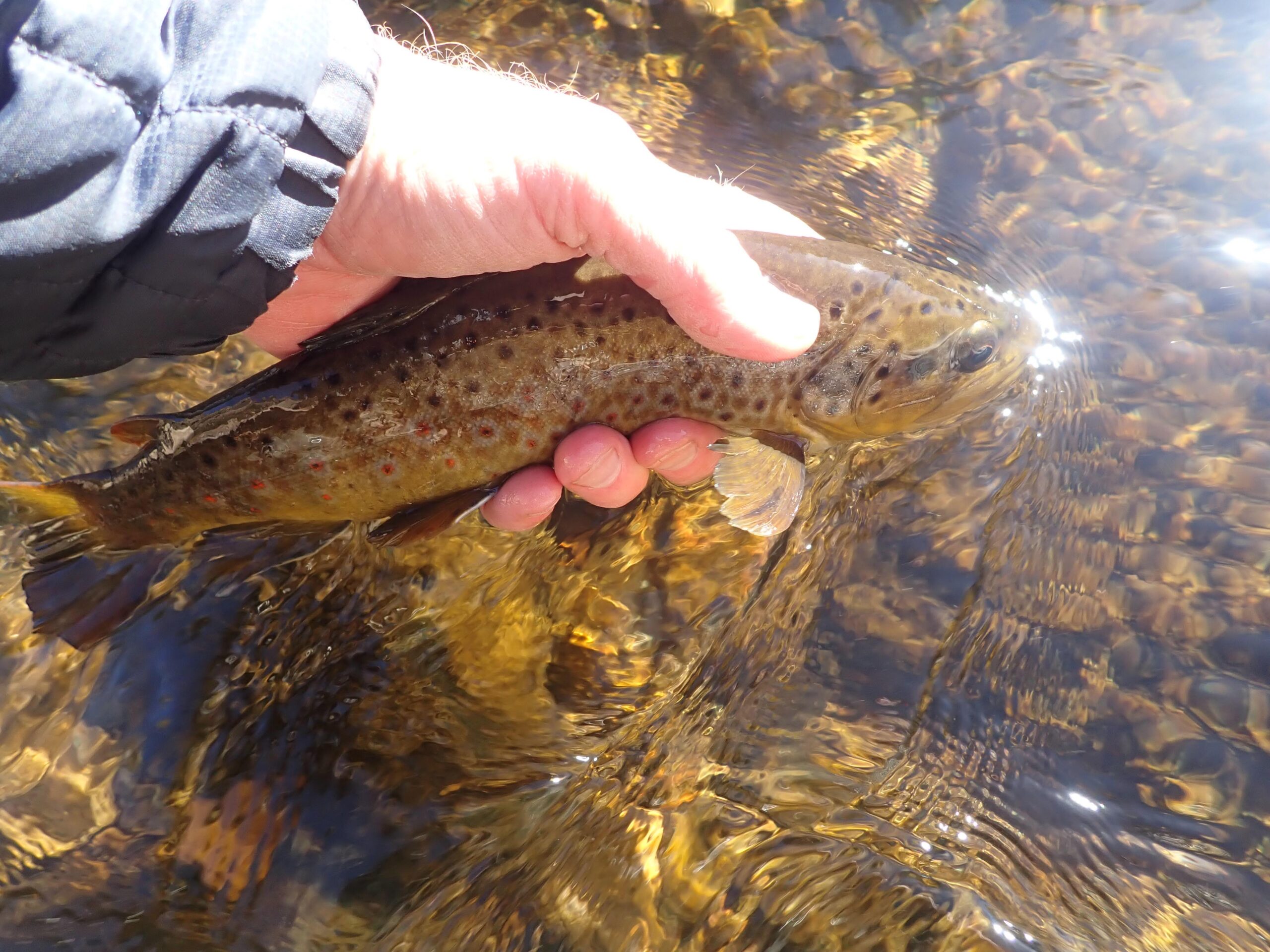 Number Two Was This Nice Brown Trout
Number Two Was This Nice Brown Trout
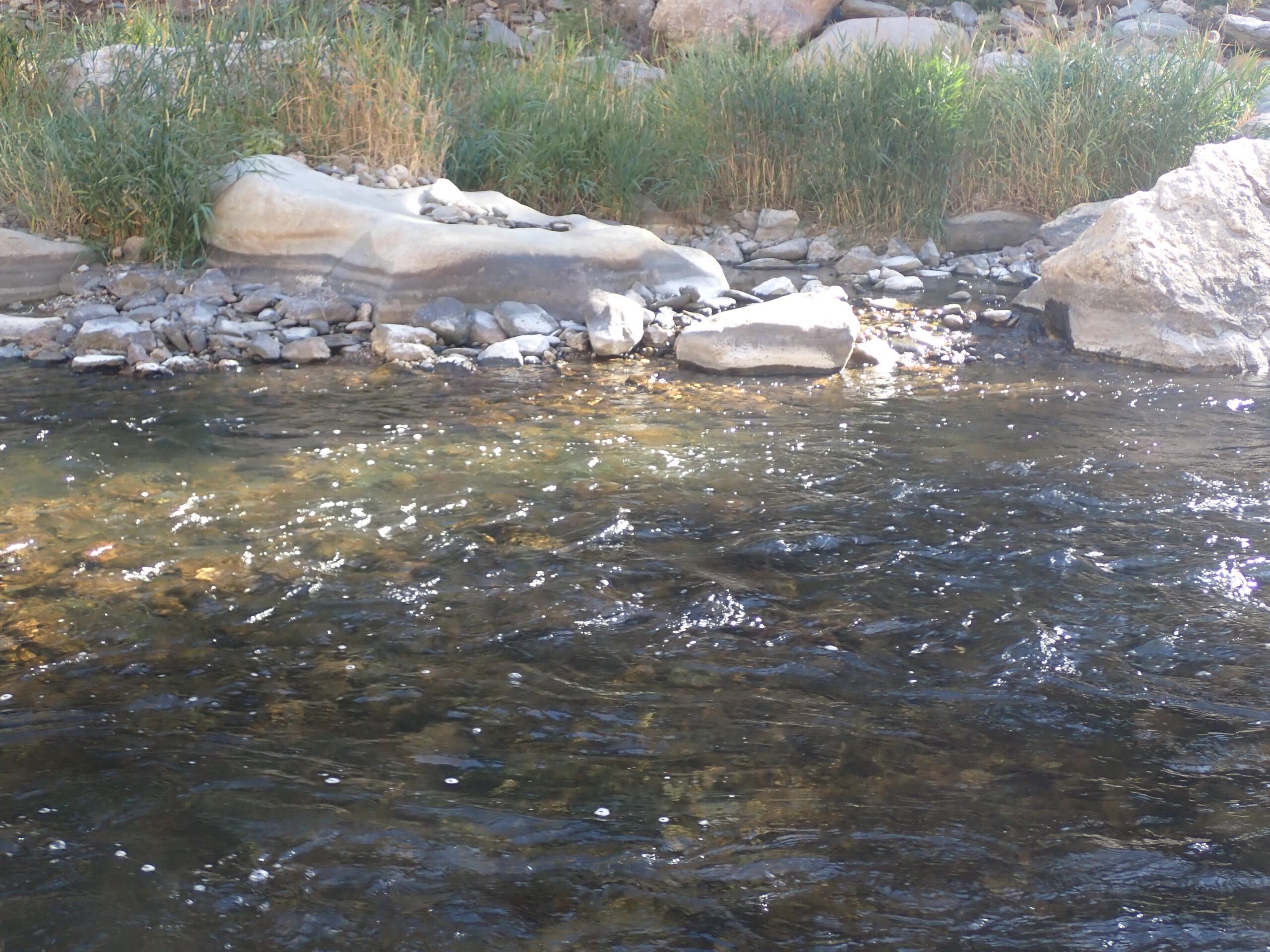 Shallow Run Along the Rocks Produced
Shallow Run Along the Rocks Produced
Alas, the two flies worked their magic once again. Between 2:00PM and 3:30 I notched five landed trout. The first one was a nine inch rainbow, and the last four were brown trout. The brown trout were all relatively respectable fish for the Big T, with a couple stretching the tape to a foot long. Two of the landed trout nabbed the caddis, and the others were attracted to the hippie stomper. I was actually a bit too warm while working my way upstream in the bright sunshine. Along the way I noticed a gravel depression, and a trout that was wiggling in an effort to eject eggs, so spawning was evident. Before I recognized the redd for what it was, I made a cast of the dry flies, and a fish elevated and nipped at one of the flies. It actually looked like it was fending off something invasive and not making an effort to eat.
All my landed fish came from slower moving areas such as eddies and slow pools that bordered the bank or were adjacent to faster current seams or large sheltering rocks. I regard Friday as a success. I experimented with different approaches and eventually found a double dry combination that was reasonably effective. Catching trout on dry flies in late October is a positive in my book. The fish count lagged, but once I solved the riddle, the fish were fine quality trout. Future outings in 2024, however, will probably take place on tailwaters. It was amazing how much the action slowed between my last outing on October 15 and today.
Fish Landed: 5

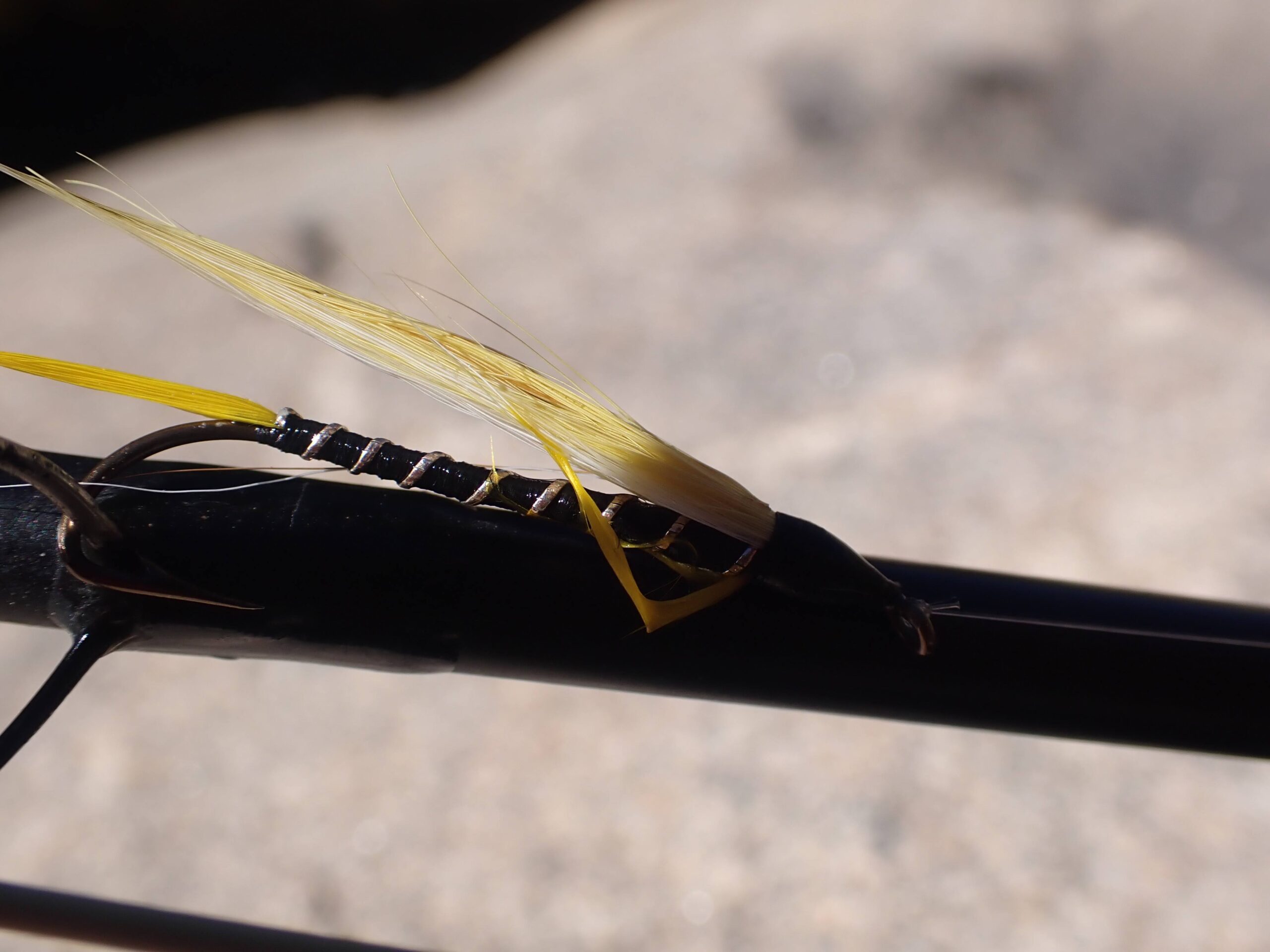 Black Ghost
Black Ghost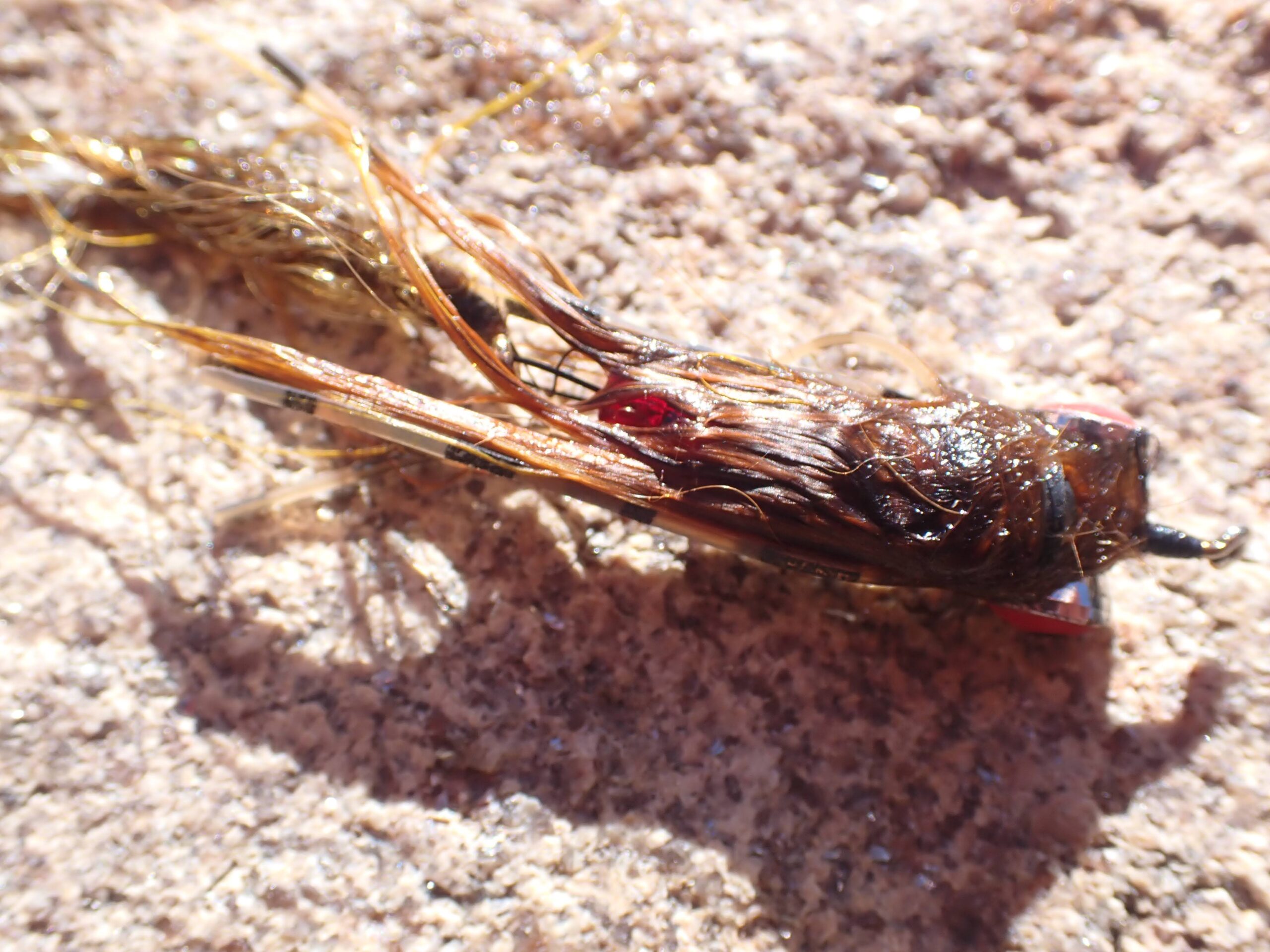 Cheech Leech
Cheech Leech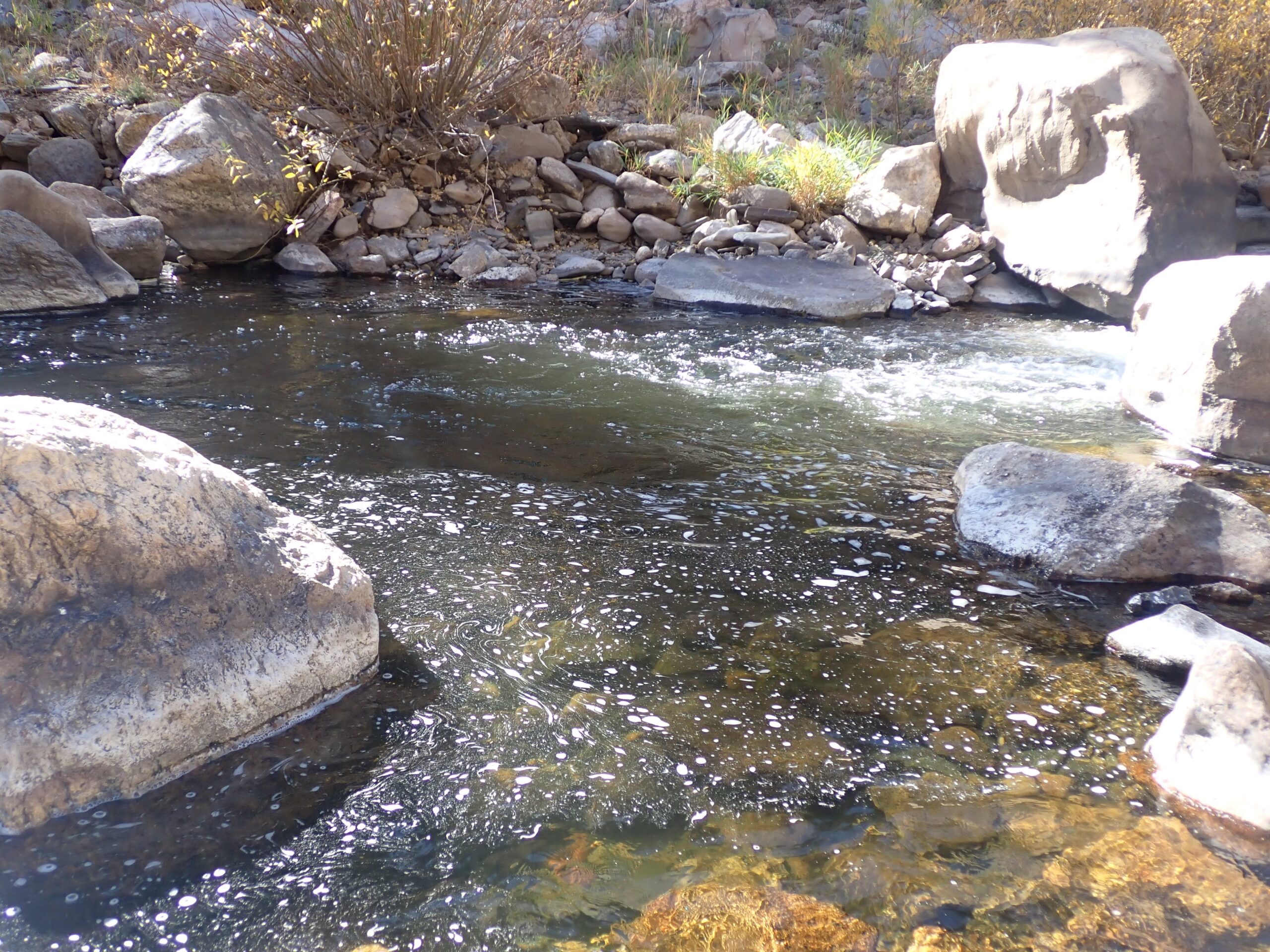 Prime Spot Did Not Produce
Prime Spot Did Not Produce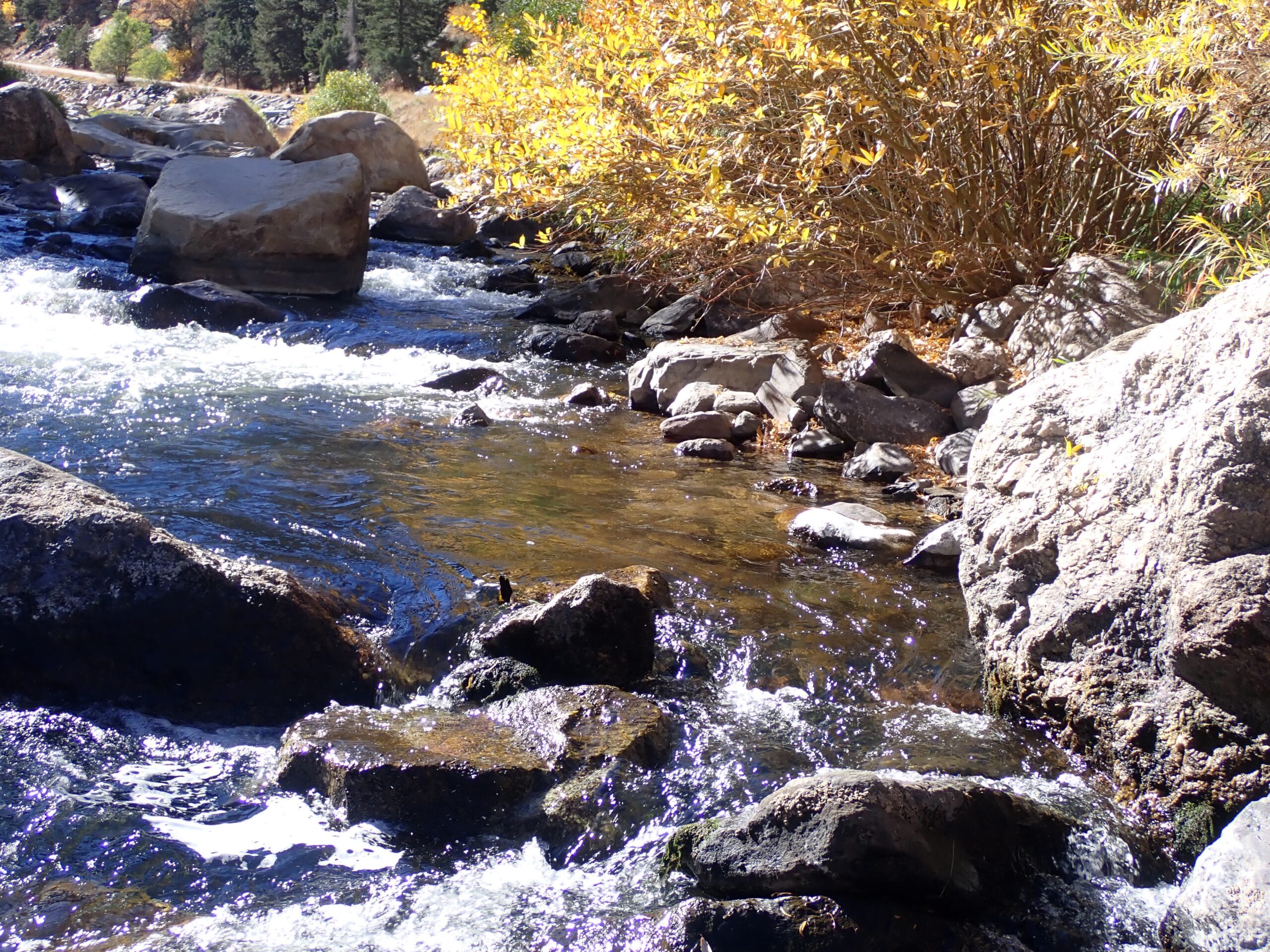 Site of First Fish
Site of First Fish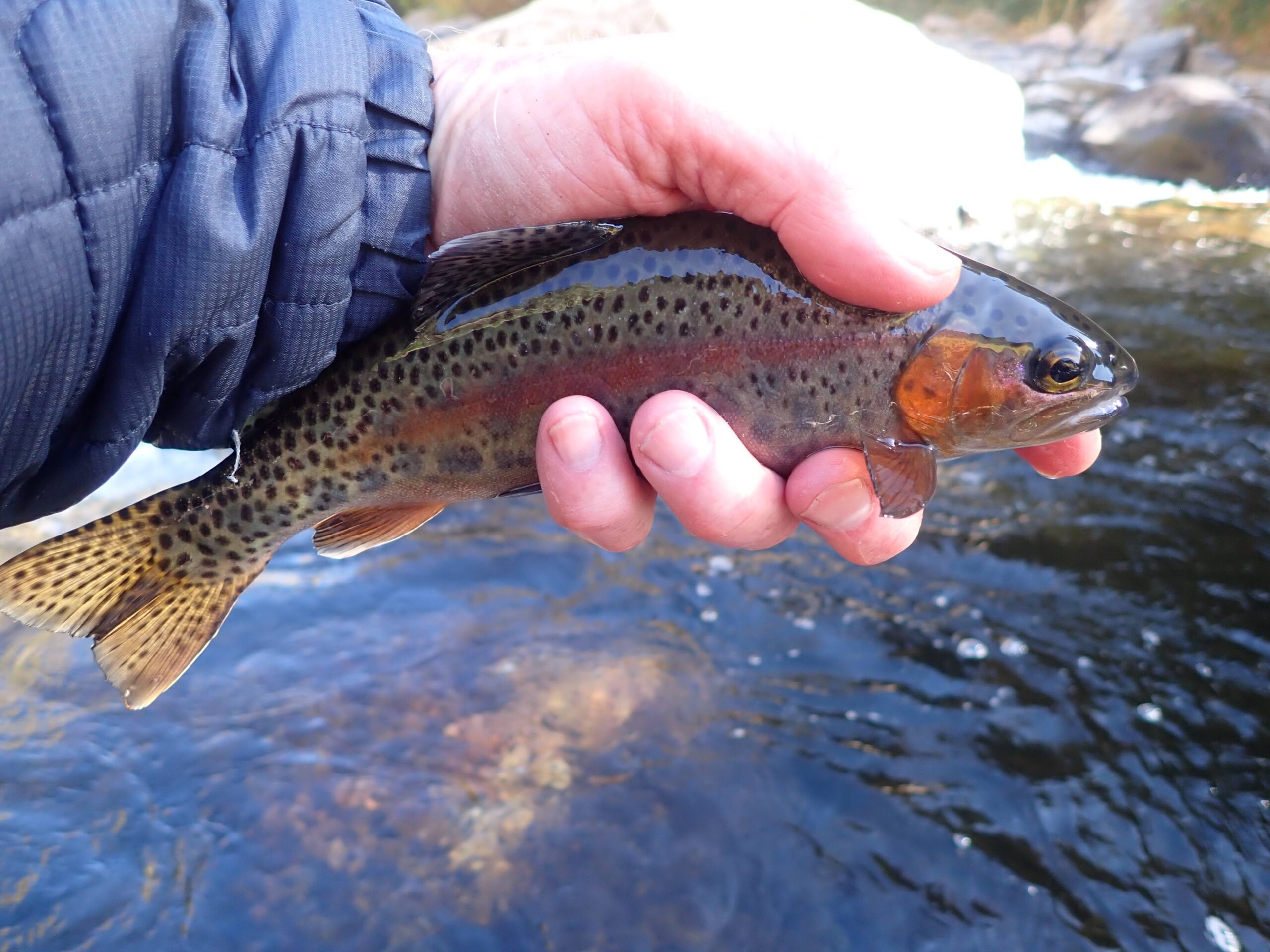 Rainbow Kicked Things Off
Rainbow Kicked Things Off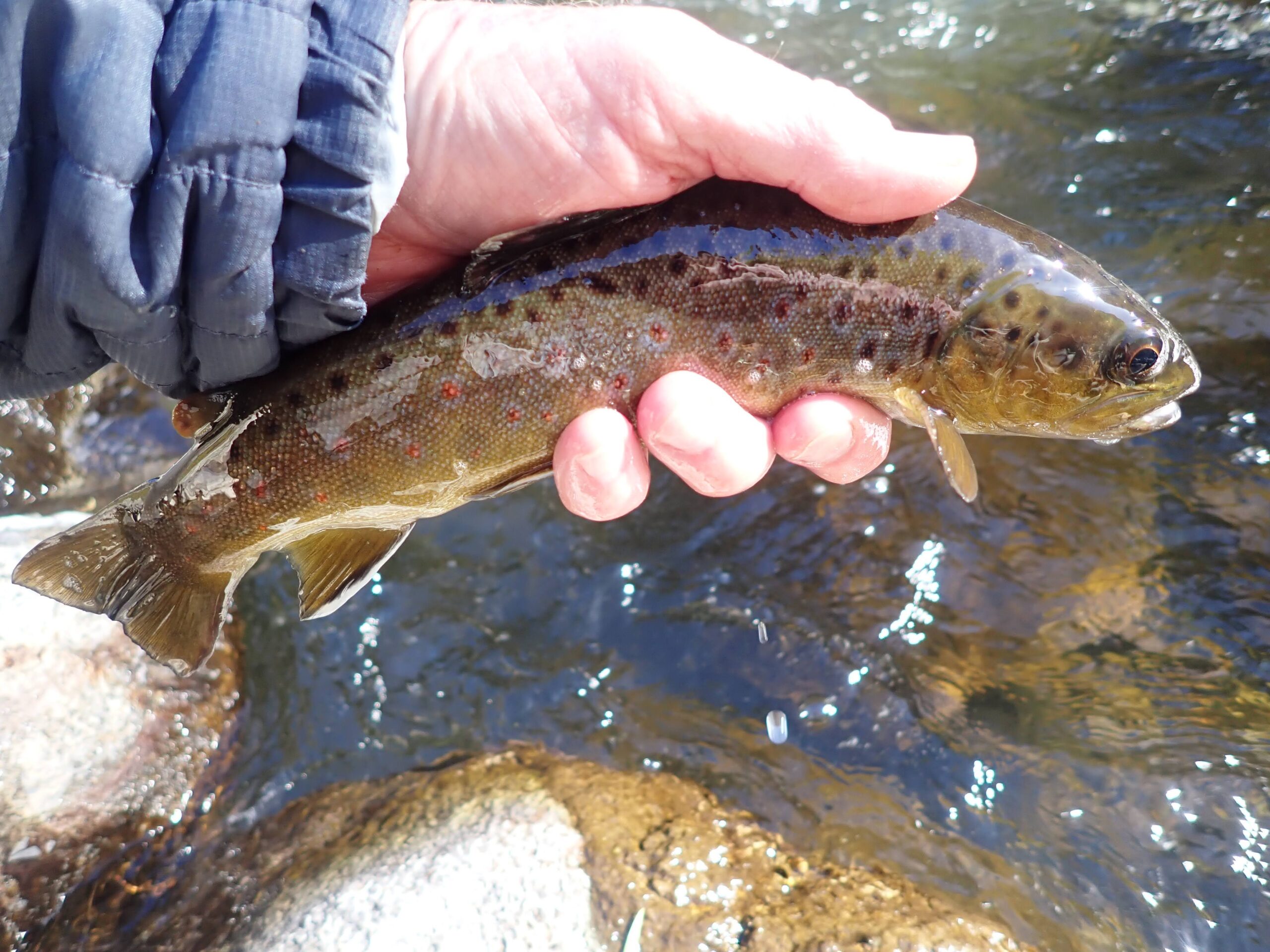 Another Fine Brown Trout
Another Fine Brown Trout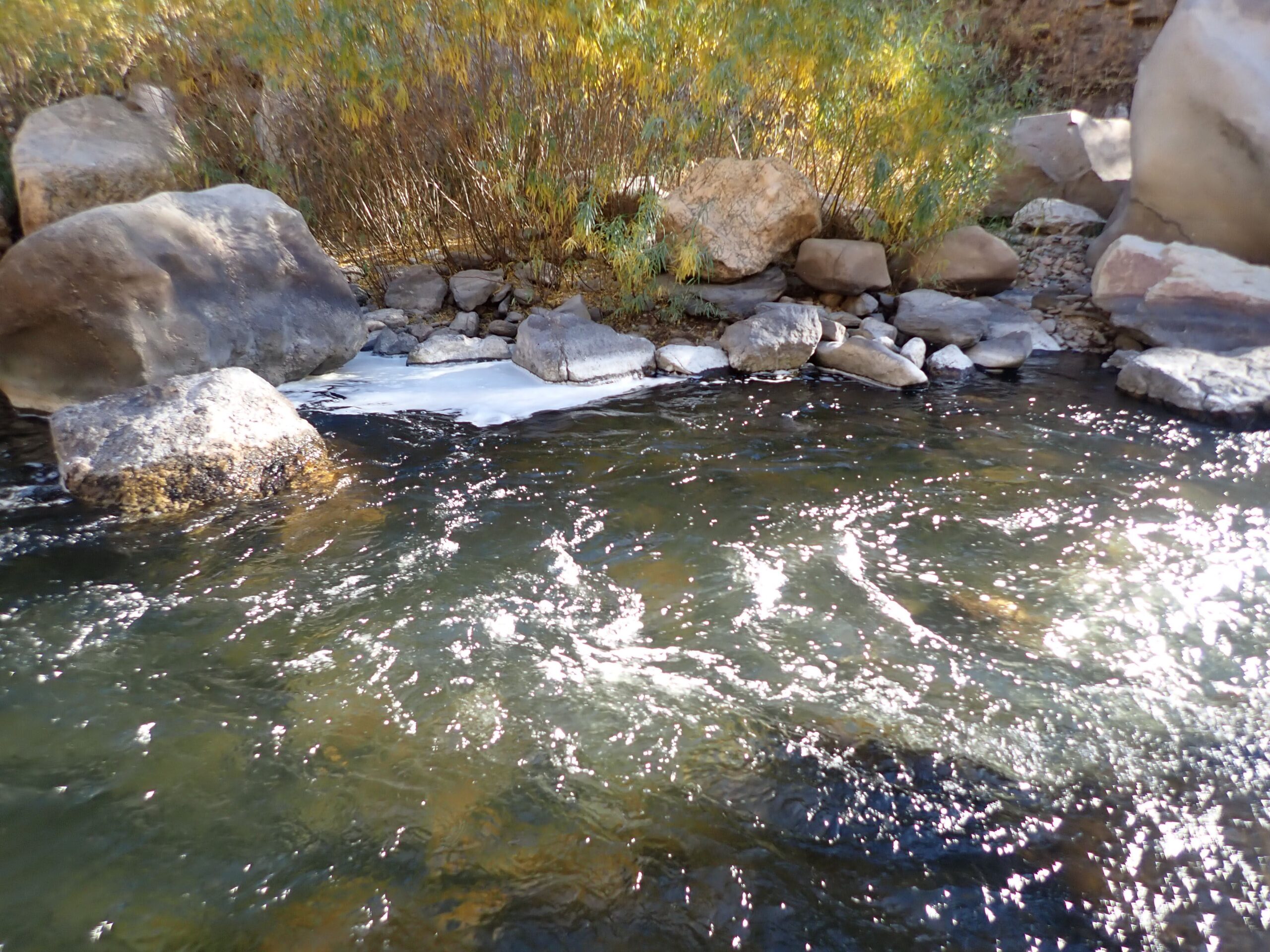 Foam Was Home
Foam Was Home